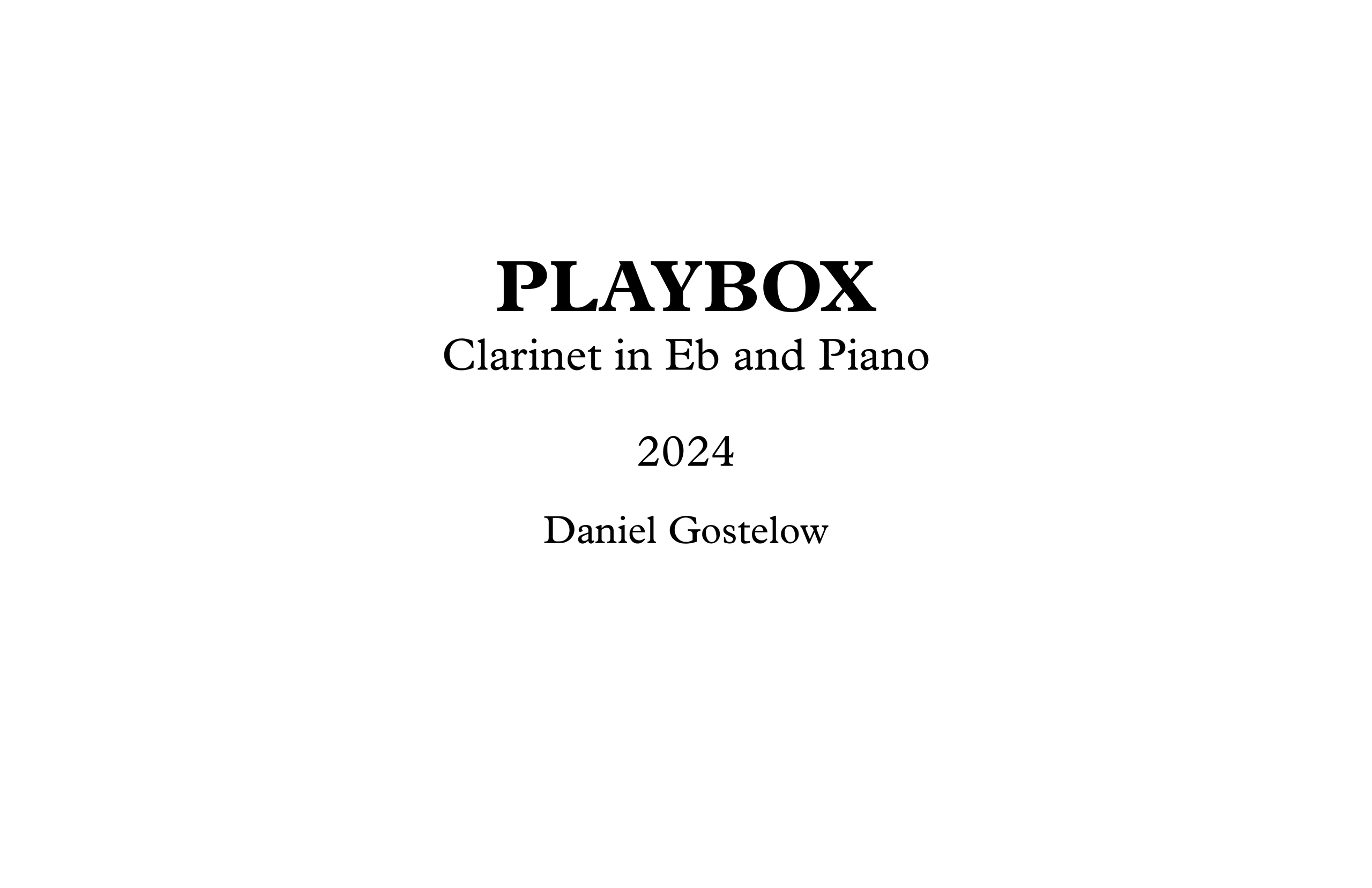

1 / 23
0:00/0:00
Duo
2024
Clarinet
Piano
- Program Notes
PLAYBOX consists of two parts: “Duo” and “Cadenza” separated by a “Transition”. The piano is the “star” of PLAYBOX. Even in “Duo”, it never assumes a purely accompanimental role and already has two significant solos - the opening and Rehearsal D. The Eb clarinet primarily plays a contrapuntal, textural, and accompanimental role, inverting the typical relationship. The cadenza features a stark multiplicity of materials, styles, and expressive states, the cadenza draws upon virtuoso idioms from the 19th century. The similarity lies not only in its expression of a perpetually changing inner consciousness, but also to its vehement disposition, emotional roller coasters, and grand textures. The somewhat convoluted narrative results in part from the manifestation of melodies, harmonies, and motifs heard prior to the cadenza. Some seamlessly integrate into the musical fabric, while others act as sudden recalls spilling into the stream of consciousness. But despite its rapid-fire outpouring and fiery
virtuosity, this solo pulls inward. It transitions by stages into softness and melancholy, culminating with an atmospheric, song-like lament. As an inner monologue, the cadenza stands in contrast to the duo, a more extroverted, ecstatic “head-banger”. The cadenza may be played separately as a standalone work.
- Recording Notes
PLAYBOX has never been recorded. This is MIDI playback with tempo and dynamics carefully determined.
- Performer Credits
- MIDI Playback